2-CHLORO-1,1,1-TRIFLUOROETHANE
- CAS NO.:75-88-7
- Empirical Formula: C2H2ClF3
- Molecular Weight: 118.49
- MDL number: MFCD00039361
- EINECS: 200-912-0
- Update Date: 2024-12-18 14:08:52

What is 2-CHLORO-1,1,1-TRIFLUOROETHANE?
Chemical properties
HCFC 133a is odorless with poor warning properties.
The Uses of 2-CHLORO-1,1,1-TRIFLUOROETHANE
HCFC133a is a nonisolated intermediate in the production of halothane.
Definition
ChEBI: 2-Chloro-1,1,1-trifluoroethane is an organofluorine compound.
Synthesis Reference(s)
Journal of the American Chemical Society, 70, p. 758, 1948 DOI: 10.1021/ja01182a096
General Description
2-CHLORO-1,1,1-TRIFLUOROETHANE is a colorless, odorless gas. 2-CHLORO-1,1,1-TRIFLUOROETHANE is shipped as a liquid under its own vapor pressure. Contact with the liquid may cause frostbite to unprotected skin. 2-CHLORO-1,1,1-TRIFLUOROETHANE can asphyxiate by the displacement of air. Exposure of the container to fire or heat can cause 2-CHLORO-1,1,1-TRIFLUOROETHANE to rupture violently and rocket.
Reactivity Profile
2-CHLORO-1,1,1-TRIFLUOROETHANE is chemically inert in many situations, but can react violently with strong reducing agents such as the very active metals and the active metals. Undergoes oxidation with strong oxidizing agents and under extremes of temperature.
Health Hazard
Vapors may cause dizziness or asphyxiation without warning. Vapors from liquefied gas are initially heavier than air and spread along ground. Contact with gas or liquefied gas may cause burns, severe injury and/or frostbite. Fire may produce irritating, corrosive and/or toxic gases.
Fire Hazard
Some may burn but none ignite readily. Containers may explode when heated. Ruptured cylinders may rocket.
Safety Profile
A poison by inhalation. Experimental reproductive effects. Questionable carcinogen with experimental carcinogenic data. When heated to decomposition it emits toxic fumes of F-.
Carcinogenicity
HCFC 133a was evaluated in a carcinogenesis screening study using Wistar-derived rats. The rats were given daily intubations of 300mg HCFC of body weight in corn oil for 52 weeks and held for a total of 125 weeks. In the males, there was a reduction in body weight gain and testicular size, also there was an increase in Leydig cell tumors and arrest of spermatogenesis. In the females, there was an increased incidence of uterine carcinomas.
Properties of 2-CHLORO-1,1,1-TRIFLUOROETHANE
| Melting point: | -105°C |
| Boiling point: | 7°C |
| Density | 1.389 |
| refractive index | 1.3090 |
| form | A liquid |
| CAS DataBase Reference | 75-88-7(CAS DataBase Reference) |
| IARC | 3 (Vol. 41, Sup 7, 71) 1999 |
| EPA Substance Registry System | HCFC-133a (75-88-7) |
Safety information for 2-CHLORO-1,1,1-TRIFLUOROETHANE
Computed Descriptors for 2-CHLORO-1,1,1-TRIFLUOROETHANE
New Products
4-Fluorophenylacetic acid 4-Methylphenylacetic acid N-Boc-D-alaninol N-BOC-D/L-ALANINOL Tert-butyl bis(2-chloroethyl)carbamate 3-Morpholino-1-(4-nitrophenyl)-5,6-dihydropyridin- 2(1H)-one Furan-2,5-Dicarboxylic Acid Tropic acid S-2-CHLORO PROPIONIC ACID ETHYL ISOCYANOACETATE 2-Bromo-1,3-Bis(Dimethylamino)Trimethinium Hexafluorophosphate (6-METHYL-[1,3]DITHIOLO[4,5-b]QUINOXALIN-2-ONE INDAZOLE-3-CARBOXYLIC ACID 4-IODO BENZOIC ACID (2-Hydroxyphenyl)acetonitrile 4-Bromopyrazole 5,6-Dimethoxyindanone 2-(Cyanocyclohexyl)acetic acid 4-methoxy-3,5-dinitropyridine 2-aminopropyl benzoate hydrochloride 1-(4-(aminomethyl)benzyl)urea hydrochloride diethyl 2-(2-((tertbutoxycarbonyl)amino) ethyl)malonate tert-butyl 4- (ureidomethyl)benzylcarbamate Ethyl-2-chloro((4-methoxyphenyl)hydrazono)acetateRelated products of tetrahydrofuran
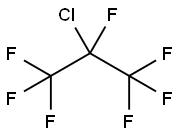
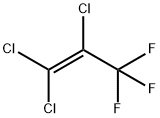


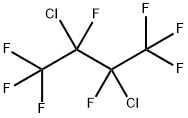
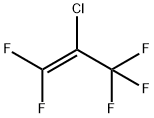
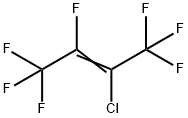

You may like
-
 2033-24-1 98%View Details
2033-24-1 98%View Details
2033-24-1 -
 42831-50-5 5-METHYLISOXAZOLE-4-CARBOXYLIC ACID 98%View Details
42831-50-5 5-METHYLISOXAZOLE-4-CARBOXYLIC ACID 98%View Details
42831-50-5 -
 1975-50-4 98%View Details
1975-50-4 98%View Details
1975-50-4 -
 2-HYDROXY BENZYL ALCOHOL 98%View Details
2-HYDROXY BENZYL ALCOHOL 98%View Details
90-01-7 -
 2-Chloro-1,3-Bis(Dimethylamino)Trimethinium Hexafluorophosphate 221615-75-4 98%View Details
2-Chloro-1,3-Bis(Dimethylamino)Trimethinium Hexafluorophosphate 221615-75-4 98%View Details
221615-75-4 -
 61397-56-6 CIS BROMO BENZOATE 98%View Details
61397-56-6 CIS BROMO BENZOATE 98%View Details
61397-56-6 -
 14714-50-2 (2-Hydroxyphenyl)acetonitrile 98+View Details
14714-50-2 (2-Hydroxyphenyl)acetonitrile 98+View Details
14714-50-2 -
 118753-70-1 98+View Details
118753-70-1 98+View Details
118753-70-1